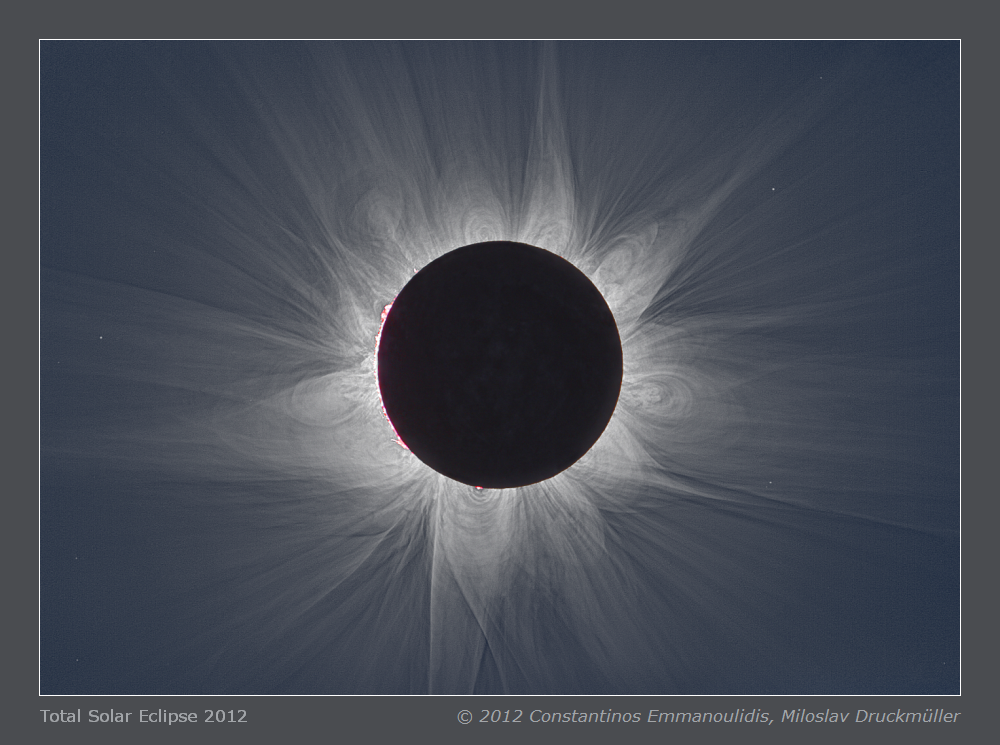
Inner corona
This image shows typical corona for solar maximum which is very different from corona during
2008, 2009 and
2010 eclipses. The Sun was only 13° above the horizon
and observing conditions were not absolutely perfect. That is why I was afraid that to achieve
the quality of eclipse images typical for several previous eclipses is impossible. The result was
a pleasurable surprise for me. The only clearly visible difference in quality from previous eclipse
images is the worse visibility of the lunar surface which is, of course, highly unimportant. The contrast of
lunar surface was significantly lowered by thin high clouds. The influence on display of inner
corona was negligible. The full resolution image you may download
here.

Click on the image or on the following reference to display the
higher resolution image version (1.9 MB, PNG format).
|
| Image | Tse2012a_816mm_ce.png |
| Date | 13. 11. 2012, (14. 11. 2012 local time) |
| Time | 2nd contact 20:37:39 UT, 3rd contact 20:39:39 UT
Total eclipse duration 2 m 0 s |
| Place | Palmer River Road House, Queensland, Australia |
| Coordinate | S 16° 7' 39'', E 144° 46' 26'', Alt. 441 m |
| Conditions | very faint high clouds |
| Optics | Takahashi TSA 102, 816mm, F8, Field flattener TOA-35 |
| Camera | Canon EOS 5D (ISO 100) - computer control Solar Eclipse Maestro |
| Exposure | 1/1000 s - 8 s |
| Processing | Composition of 41 eclipse images. Eclipse images were calibrated by means of dark frames and flat-fields (totally 1621 images), aligned by means of phase correlation, composed by means of LDIC 5.0 software, processed using Corona 4.1 in order to visualize coronal structures. Final processing was done using ACC 6.1 software.
Image processing by Miloslav Druckmüller |
| Software | Astro D3F 2.0, PhaseCorr 6.0, MPA 1.0, LDIC 6.0, Corona 4.1, Sofo ACC 6.1 |
| Note | The graph above the table shows the average values of the relative number of sunspots in which the red line indicates the time of 2012 eclipse. The data from the World Data Center for the sunspot index, (Solar Influences Data Analysis Center, the Royal Observatory of Belgium) were used. |
| Orientation | Image must be rotated 23.75° clockwise to achieve standard orientation i. e. solar North up. |
| Copyright | © 2012 Constantinos Emmanouilidis, Miloslav Druckmüller |

|
Miloslav Druckmüller
Institute of Mathematics, Faculty of Mechanical Engineering
Brno University of Technology, Czech Republic
druckmuller@fme.vutbr.cz
|
Page last update: 27.11.2019
|
|

